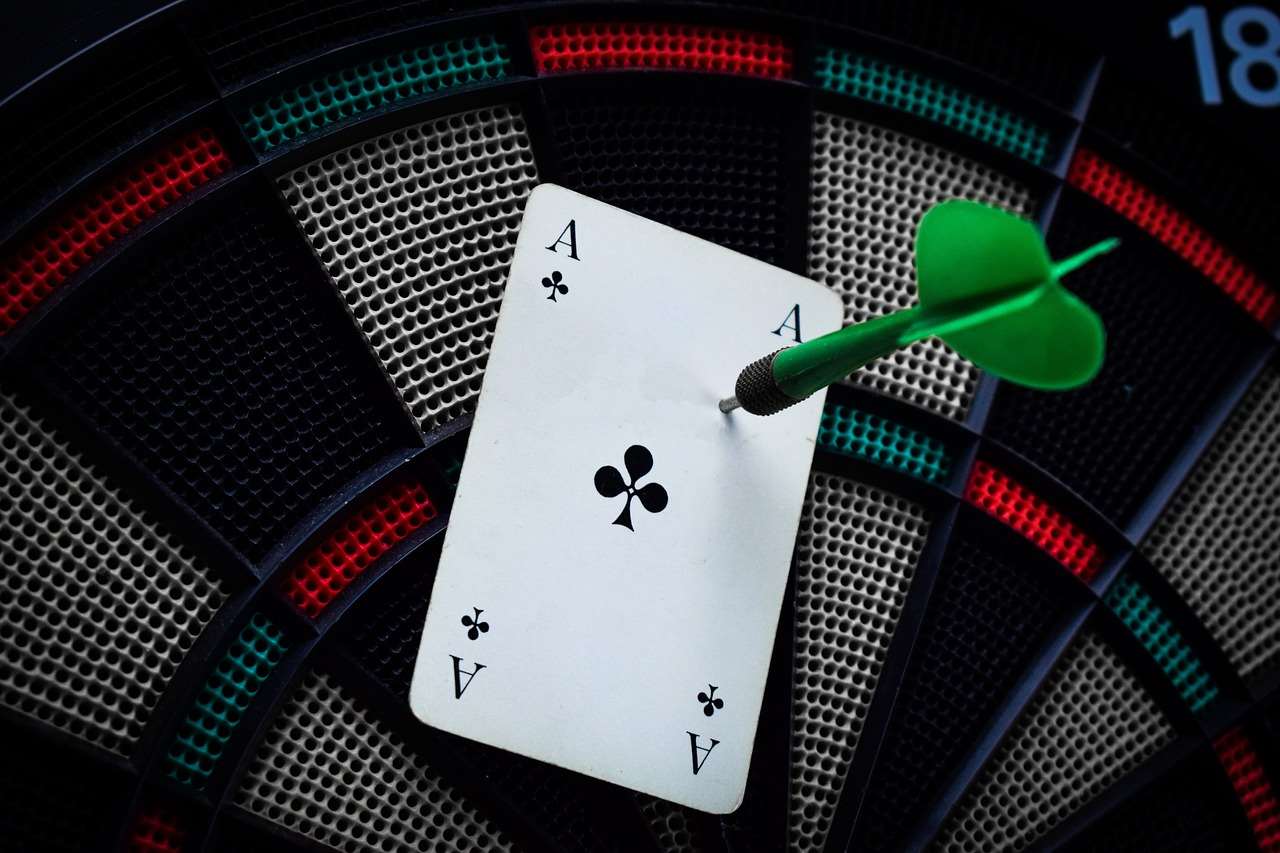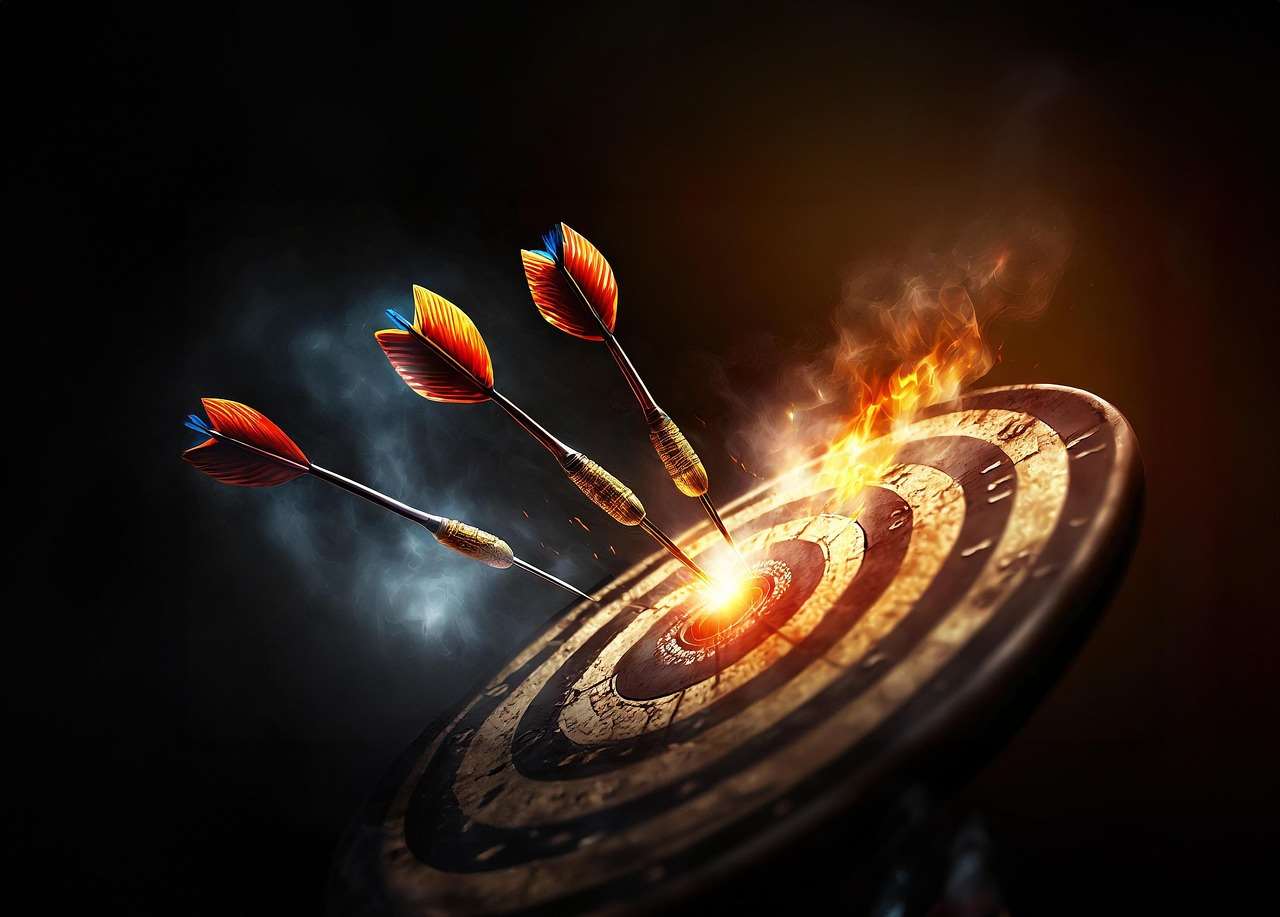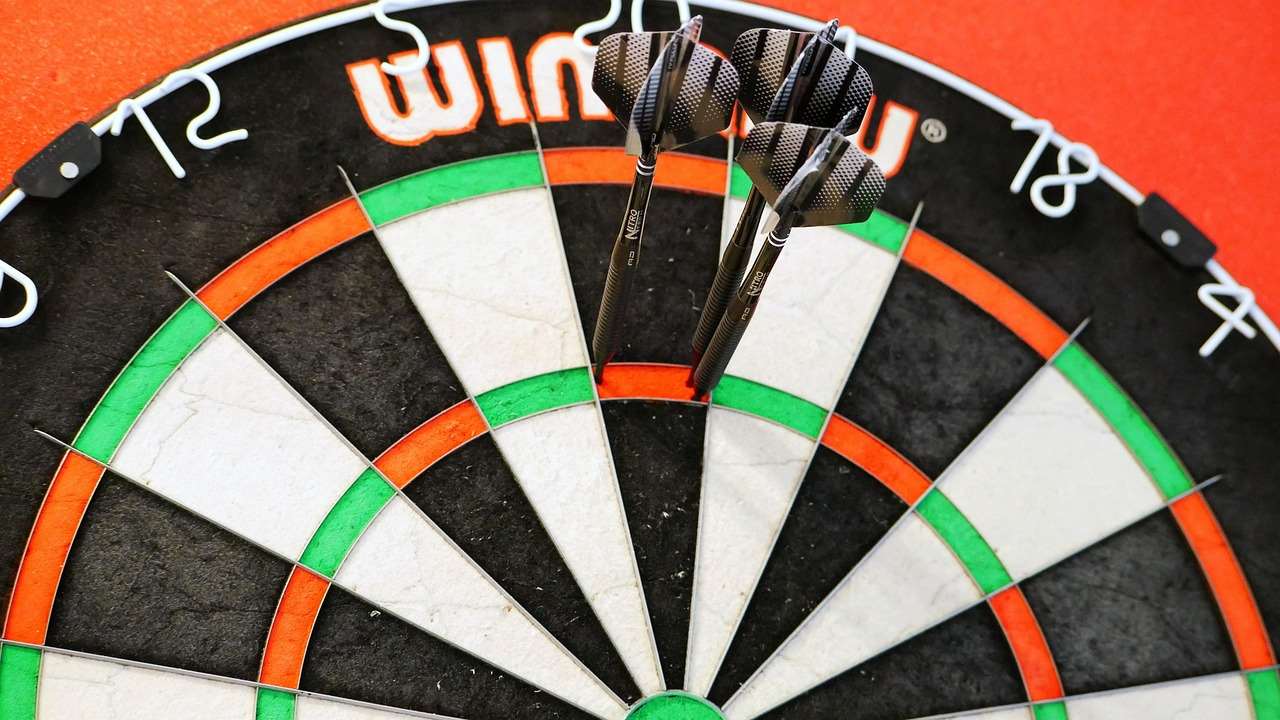Achieving **3 darts in bullseye** consistently is the pinnacle of dart throwing prowess, requiring a blend of skill, precision, and dedicated practice. This article will explore the techniques, strategies, and mental fortitude needed to significantly improve your chances of hitting that coveted treble, offering insights for both beginners and seasoned players alike. You’ll learn about stance, grip, release, follow-through, and mental strategies to maximize your scores and get closer to that perfect game.
⚠️ Still Using Pen & Paper (or a Chalkboard)?! ⚠️
Step into the future! The Dart Counter App handles all the scoring, suggests checkouts, and tracks your stats automatically. It's easier than you think!
Try the Smart Dart Counter App FREE!Ready for an upgrade? Click above!
Mastering the Basics: The Foundation for 3 Darts in Bullseye
Before even thinking about landing **3 darts in bullseye**, it’s crucial to solidify the fundamentals. Think of it as building a house – a shaky foundation will inevitably lead to a collapse. For darts, that foundation consists of your stance, grip, and throw. Each of these elements needs to be consistent and comfortable to allow for accurate shots.
Stance: Setting the Stage for Success
Your stance provides the stability and balance necessary for a smooth and repeatable throw. There are generally three types of stances:
- Straight-on: Facing the board directly, with both feet parallel to the oche (the throwing line).
- Slight angle: Positioning yourself at a slight angle to the board, typically with your dominant foot forward. This is perhaps the most common stance.
- Side-on: Standing perpendicular to the board, with your dominant side facing the target.
Experiment with each stance to see which one feels the most natural and balanced. The key is to maintain a stable base throughout your throw. Remember to keep your weight evenly distributed and avoid swaying or shifting your weight during your motion. Proper dartboard placement is also key when practicing. Even if you have an amazing stance, it is hard to throw a great dart if the board is in the wrong spot!
Grip: Finding the Perfect Feel
The grip is another critical element of a successful dart throw. There’s no one-size-fits-all grip; it’s all about finding what works best for you. Here are some popular grip styles:
- Two-finger grip: Holding the dart between your thumb and index finger.
- Three-finger grip: Adding your middle finger for more control.
- Four-finger grip: Utilizing all four fingers for maximum stability.
Regardless of the number of fingers you use, ensure you’re holding the dart firmly but not too tightly. A death grip can lead to tension and inconsistent throws. Experiment with different pressure levels to find the sweet spot where you have control without restricting your movement. Consider the barrel design of your darts too – knurled, smooth, or scalloped barrels can influence your grip and overall feel. Regular darts scoring practice will help you to refine and perfect your grip over time.

Throw: The Art of Release
The throw is where all your preparation comes together. A smooth, controlled, and repeatable throwing motion is crucial for achieving accuracy. Here’s a breakdown of the key stages:
- The setup: Bring the dart up to eye level, aiming at your target (in this case, the bullseye).
- The backswing: Draw the dart back smoothly, keeping your elbow high and your eye fixed on the target.
- The forward swing: Accelerate the dart forward, releasing it just before your arm reaches full extension.
- The follow-through: Continue your arm motion towards the target, ensuring a smooth and consistent release.
Focus on keeping your wrist firm and avoiding any jerky movements. The power should come from your forearm and shoulder, not your wrist. The **follow-through** is incredibly important – it ensures that the dart is released smoothly and consistently, maximizing your chances of hitting the target.
Strategies for Hitting 3 Darts in Bullseye: A Focused Approach
Once you’ve mastered the basics, you can start implementing specific strategies to improve your bullseye accuracy. Consistent practice is paramount, but understanding these approaches will accelerate your progress towards achieving **3 darts in bullseye**.
Target Fixation: The Power of Focus
Before each throw, take a moment to fix your gaze on the bullseye. This helps to focus your mind and body on the target, improving your accuracy. Visualizing the dart hitting the bullseye can also boost your confidence and improve your mental game. Try using your non-throwing eye to focus and your throwing eye to judge distance to help achieve proper target fixation.
Consistent Rhythm: Finding Your Flow
Develop a consistent pre-throw routine. This could involve taking a few deep breaths, bouncing on your toes, or waggling the dart. The purpose is to create a sense of rhythm and consistency, helping you to relax and focus before each throw. Consistency is key for successfully landing **3 darts in bullseye**, or any sequence of darts.
Aiming Adjustments: Correcting Your Course
Even with a perfect throw, slight variations in your stance or grip can cause your darts to stray from the bullseye. Pay attention to where your darts are landing and make small adjustments to your aim accordingly. If your darts are consistently landing to the left, adjust your stance slightly to the right, and vice versa. These subtle adjustments can make a significant difference in your accuracy.

The Mental Game: Staying Calm and Focused
Darts is as much a mental game as it is a physical one. Staying calm, focused, and confident is crucial for consistently hitting the bullseye. Pressure, nerves, and distractions can all negatively impact your performance. To improve your mental game, try these techniques:
Visualization: Seeing Success
Before each throw, close your eyes and visualize the dart hitting the bullseye. Imagine the feeling of the dart leaving your hand and flying straight to the target. This technique can help to boost your confidence and improve your focus.
Positive Self-Talk: Believing in Yourself
Replace negative thoughts with positive affirmations. Instead of thinking “I’m going to miss,” tell yourself “I can hit this.” Positive self-talk can help to build your confidence and improve your mental resilience.
Breathing Techniques: Staying Calm Under Pressure
Practice deep breathing exercises to help you stay calm and focused under pressure. When you feel your heart racing or your hands shaking, take a few slow, deep breaths to calm your nerves. Breathing techniques can help to lower your heart rate and reduce anxiety.
Equipment Matters: Choosing the Right Darts
The right darts can make a significant difference in your performance. Experiment with different weights, shapes, and materials to find the darts that feel most comfortable and suit your throwing style. Consider these factors when choosing your darts:
Weight: Finding the Right Balance
Darts typically range in weight from 18 to 30 grams. Lighter darts are generally easier to throw, while heavier darts can provide more stability. Experiment with different weights to see which feels most comfortable and allows you to throw consistently.
Shape: Optimizing Your Grip
Darts come in various shapes, including straight barrels, torpedo barrels, and bomb barrels. The shape of the dart can affect your grip and your throwing style. Experiment with different shapes to see which feels most natural and allows you to maintain a consistent grip.
Material: Durability and Performance
Darts are typically made from brass, nickel silver, or tungsten. Tungsten darts are denser and more durable than brass or nickel silver darts. They also allow for a slimmer barrel, which can improve your grouping. Remember that you might need a unicorn maestro darts tune up kit depending on the materials used.

Practice Drills for 3 Darts in Bullseye
Consistent practice is essential for achieving **3 darts in bullseye**. Here are some drills to help you improve your accuracy and consistency:
The Bullseye Challenge: Testing Your Accuracy
Set a goal of hitting the bullseye with a certain percentage of your darts. Start with a low percentage and gradually increase it as you improve. This drill will help you to track your progress and identify areas for improvement.
The Around the Clock Drill: Developing Consistency
Start at the number 1 and work your way around the board, hitting each number in sequence. This drill will help you to develop consistency and accuracy in all areas of the board, which is essential for setting up shots at the bullseye. Some prefer the Cricket darts scorer app (https://dartcounterapp.com/) to keep track.
The Checkout Drill: Simulating Game Situations
Practice checking out from different scores, focusing on combinations that involve hitting the bullseye. This drill will help you to develop your strategy and improve your ability to finish games under pressure. A **darts checkout table** is a valuable resource for this drill.
Troubleshooting Common Issues: Overcoming Obstacles
Even with proper technique and practice, you may encounter challenges along the way. Here are some common issues and how to address them:
Darts Landing Too High or Too Low: Adjusting Your Release Point
If your darts are consistently landing too high, try releasing the dart slightly later in your throw. If they’re landing too low, try releasing it slightly earlier. Small adjustments to your release point can make a significant difference in your accuracy.
Darts Landing to the Left or Right: Correcting Your Stance or Aim
If your darts are consistently landing to the left, adjust your stance slightly to the right or aim slightly to the right of the target. If they’re landing to the right, do the opposite. These adjustments will help you to compensate for any inconsistencies in your throwing motion.
Inconsistent Grouping: Focusing on Consistency and Rhythm
If your darts are scattered all over the board, focus on developing a consistent throwing motion and rhythm. Practice your pre-throw routine and pay attention to your grip, stance, and release point. Consistency is key to achieving tight groupings.

Advanced Techniques: Elevating Your Game
Once you’ve mastered the fundamentals and addressed common issues, you can start exploring advanced techniques to further elevate your game:
Double Out Mastery: Securing the Win
Becoming proficient at hitting doubles is crucial for finishing legs and securing wins. Practice hitting doubles consistently to become a more well-rounded and dangerous player. This skill is essential to darts winning the bull.
Advanced Checkout Combinations: Strategic Planning
Learn advanced checkout combinations that involve hitting specific numbers and doubles to finish legs quickly and efficiently. This requires a deep understanding of the scoring system and the ability to think strategically under pressure.
Reading Your Opponent: Exploiting Weaknesses
Pay attention to your opponent’s throwing style, tendencies, and weaknesses. Use this information to your advantage by applying pressure in strategic situations and exploiting their vulnerabilities.
Maintaining Your Equipment: Ensuring Peak Performance
Proper maintenance is essential for keeping your darts and dartboard in optimal condition:
Sharpening Your Darts: Improving Grip and Penetration
Regularly sharpen your dart points to improve their grip on the board and ensure clean penetration. Dull points can cause bounce-outs and inconsistent throws. A dart sharpener is a valuable tool for maintaining your darts.
Rotating Your Dartboard: Even Wear and Tear
Rotate your dartboard regularly to distribute wear and tear evenly. This will prolong the life of your dartboard and ensure that the scoring areas remain in good condition.
Cleaning Your Dartboard: Removing Dust and Debris
Clean your dartboard periodically to remove dust and debris that can affect the grip of your darts. A soft brush or cloth can be used to gently clean the surface of the board.

The Community: Connecting with Fellow Dart Enthusiasts
Joining a darts league or club can provide valuable opportunities to practice, compete, and learn from other players. The darts community is a supportive and welcoming environment where you can improve your skills and make new friends. Consider joining a local league or club to take your game to the next level. There are many online communities dedicated to darts, providing a platform for players of all levels to connect, share tips, and discuss the latest news and events. You may even find new friends from places like bullseye darts and drinks reykjavik, who share the same passion!
Conclusion: The Journey to 3 Darts in Bullseye
Achieving the feat of **3 darts in bullseye** is a challenging but rewarding goal. By mastering the fundamentals, implementing strategic techniques, and honing your mental game, you can significantly improve your accuracy and consistency. Remember to choose the right equipment, practice regularly, and maintain your darts and dartboard. Join the darts community to connect with fellow enthusiasts and continue learning and growing as a player. So, pick up your darts, focus on the target, and embark on your journey to becoming a bullseye master. Take your aim and put in the work to get 3 darts in bullseye!
Ready to take your darts game to the next level? Start practicing these tips today and see your accuracy soar. Join a local darts club or league to further enhance your skills and connect with fellow enthusiasts!
Hi, I’m Dieter, and I created Dartcounter (Dartcounterapp.com). My motivation wasn’t being a darts expert – quite the opposite! When I first started playing, I loved the game but found keeping accurate scores and tracking stats difficult and distracting.
I figured I couldn’t be the only one struggling with this. So, I decided to build a solution: an easy-to-use application that everyone, no matter their experience level, could use to manage scoring effortlessly.
My goal for Dartcounter was simple: let the app handle the numbers – the scoring, the averages, the stats, even checkout suggestions – so players could focus purely on their throw and enjoying the game. It began as a way to solve my own beginner’s problem, and I’m thrilled it has grown into a helpful tool for the wider darts community.